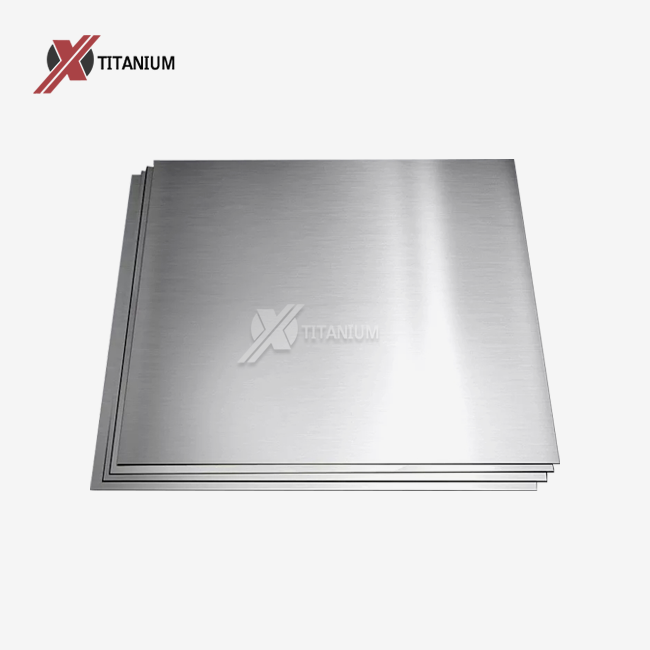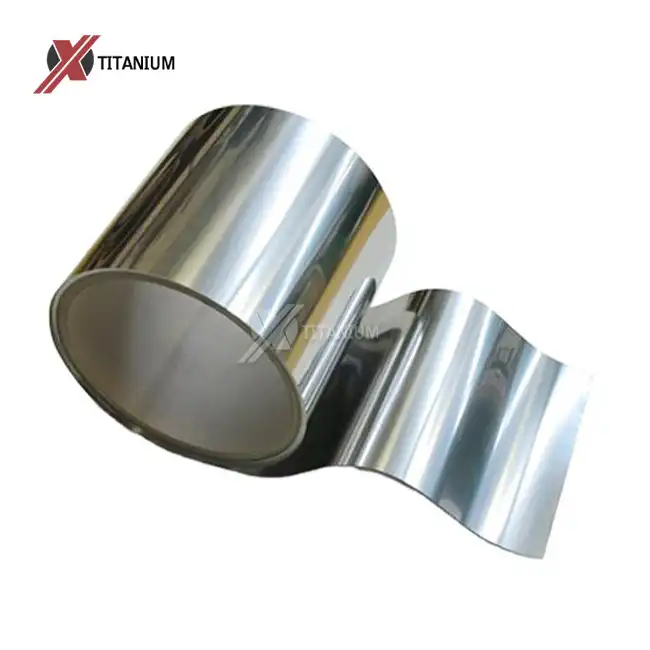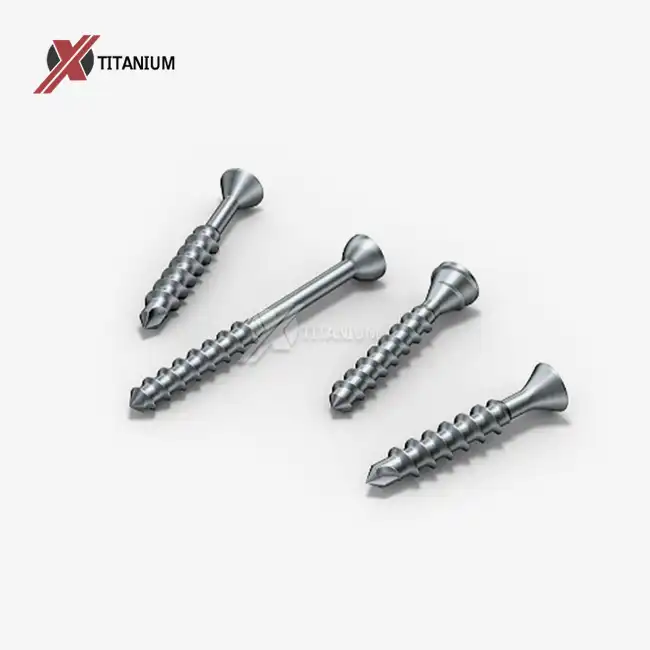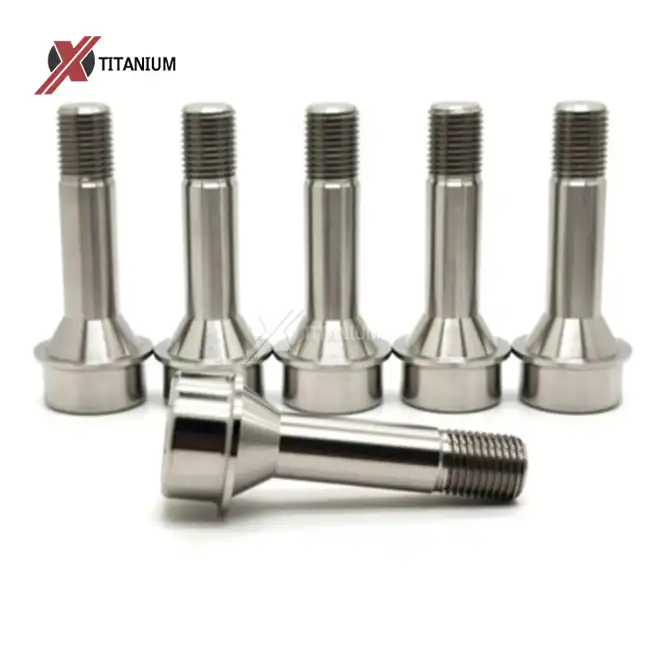The Role of Grade 5 Titanium Plate in Electric Aircraft Design
Lightweight Structural Components
Grade 5 titanium plate plays a pivotal role in the construction of lightweight structural components for electric aircraft. The aviation industry's push towards electrification demands materials that can withstand high stress while minimizing overall weight. Grade 5 titanium, with its superior strength-to-weight ratio, emerges as an optimal choice for manufacturers. This alloy's ability to maintain its properties under extreme conditions makes it invaluable for crafting critical structural elements such as wing spars, fuselage frames, and engine mounts.
The unique composition of grade 5 titanium plate, consisting of 90% titanium, 6% aluminum, and 4% vanadium, provides an excellent balance of strength and malleability. This allows engineers to design complex geometries that optimize aerodynamics and structural integrity. As electric aircraft designs continue to evolve, the demand for precision-engineered grade 5 titanium plate components is expected to surge, driving innovation in manufacturing processes and alloy formulations.
Battery Enclosures and Thermal Management Systems
Electric aircraft rely heavily on advanced battery systems, and grade 5 titanium plate is becoming increasingly important in this aspect of design. The material's corrosion resistance and thermal properties make it an excellent choice for battery enclosures and thermal management systems. These components must withstand the rigors of frequent charge-discharge cycles and protect against thermal runaway events.
Grade 5 titanium plate's low thermal expansion coefficient ensures dimensional stability across a wide range of temperatures, crucial for maintaining the integrity of battery packs during operation. Additionally, its high strength allows for thinner walls in enclosures, further reducing weight without compromising safety. As battery technology advances and energy densities increase, the demand for sophisticated grade 5 titanium plate solutions in this area is expected to grow substantially.
Electric Motor Components
The electric motors powering these aircraft require materials that can withstand high rotational speeds and magnetic fields while remaining lightweight. Grade 5 titanium plate is increasingly being utilized in motor housings, shaft components, and other critical parts. Its non-magnetic properties and resistance to electrical conductivity make it an ideal material for these applications, ensuring minimal interference with motor operation.
As electric aircraft manufacturers strive for greater power-to-weight ratios in their propulsion systems, the use of grade 5 titanium plate in motor design is likely to become more prevalent. The material's ability to maintain its strength at elevated temperatures also contributes to improved motor efficiency and longevity, factors that are crucial in the competitive electric aviation market.
Advancements in Grade 5 Titanium Plate Manufacturing for Electric Aircraft
Precision Machining and Forming Techniques
The increasing demand for grade 5 titanium plate in electric aircraft manufacturing has spurred advancements in precision machining and forming techniques. Traditional methods of working with titanium often result in high tool wear and long production times. However, innovative approaches such as high-speed machining, electrical discharge machining (EDM), and advanced CNC milling are revolutionizing the production of complex titanium components.
These cutting-edge techniques allow for the creation of intricate geometries with tight tolerances, essential for optimizing the performance of electric aircraft components. As the industry scales up production, investments in these advanced manufacturing processes are likely to increase, driving down costs and improving the availability of high-quality grade 5 titanium plate products tailored for electric aviation applications.
Additive Manufacturing and 3D Printing
Additive manufacturing, particularly 3D printing, is emerging as a game-changer in the production of grade 5 titanium plate components for electric aircraft. This technology enables the creation of complex, lightweight structures that would be impossible or prohibitively expensive to produce using traditional methods. 3D printing allows for the optimization of part topology, resulting in components that are stronger yet lighter than their conventionally manufactured counterparts.
As additive manufacturing techniques for grade 5 titanium continue to mature, we can expect to see an increase in their application for electric aircraft parts. This shift will likely lead to shorter lead times, reduced material waste, and the ability to rapidly prototype and iterate designs. The flexibility offered by 3D printing is particularly valuable in the fast-evolving field of electric aviation, where design changes may be frequent as the technology progresses.
Surface Treatment and Coating Innovations
The performance of grade 5 titanium plate in electric aircraft applications can be further enhanced through advanced surface treatments and coatings. These processes improve wear resistance, reduce friction, and enhance the material's already impressive corrosion resistance. Innovations in this area include plasma electrolytic oxidation (PEO) coatings, which create a hard ceramic layer on the titanium surface, and nanostructured coatings that can improve the material's electrical and thermal properties.
As electric aircraft operate in diverse environments and face unique challenges, the development of specialized surface treatments for grade 5 titanium plate is likely to accelerate. These advancements will contribute to extending component lifespans, improving overall aircraft reliability, and potentially enabling new design possibilities that leverage the enhanced properties of treated titanium surfaces.
Supply Chain Considerations for Grade 5 Titanium Plate in Electric Aircraft Production
Raw Material Sourcing and Sustainability
The anticipated increase in demand for grade 5 titanium plate in electric aircraft manufacturing raises important questions about raw material sourcing and sustainability. Titanium extraction and processing are energy-intensive activities, and as the industry scales up, there will be a growing focus on developing more sustainable production methods. This includes exploring alternative extraction techniques, increasing the use of recycled titanium, and optimizing energy consumption in the refining process.
Electric aircraft manufacturers are likely to prioritize suppliers who can demonstrate a commitment to sustainable practices and provide traceability for their grade 5 titanium plate products. This shift may lead to the development of new supply chain certifications and standards specific to the electric aviation industry, ensuring that the environmental benefits of electric aircraft are not offset by the environmental costs of material production.
Global Supply Chain Resilience
The strategic importance of grade 5 titanium plate in electric aircraft manufacturing necessitates a resilient global supply chain. As demand grows, manufacturers will need to diversify their supplier base to mitigate risks associated with geopolitical tensions, natural disasters, or other disruptions. This may lead to the development of new titanium production facilities in regions that have not traditionally been major players in the industry.
Additionally, we can expect to see increased collaboration between electric aircraft manufacturers, grade 5 titanium plate producers, and governments to ensure a stable and secure supply chain. This could involve long-term supply agreements, strategic stockpiling of raw materials, and investments in domestic production capabilities to reduce reliance on imports.
Quality Control and Certification Processes
The critical nature of grade 5 titanium plate components in electric aircraft demands rigorous quality control and certification processes. As production volumes increase, there will be a need for more efficient and reliable inspection methods to ensure that every plate meets the exacting standards required for aerospace applications. This may drive innovations in non-destructive testing techniques, such as advanced ultrasonic and X-ray inspection methods tailored for titanium alloys.
Furthermore, the unique requirements of electric aircraft may necessitate the development of new certification standards specific to grade 5 titanium plate used in these applications. Industry bodies and regulatory agencies are likely to collaborate closely with manufacturers to establish these standards, ensuring that safety and performance requirements are met as the technology evolves.
Conclusion
The demand for grade 5 titanium plate in electric aircraft manufacturing is set to experience substantial growth as the aviation industry embraces electrification. Its exceptional properties make it an indispensable material for lightweight structural components, battery systems, and electric motor parts. Advancements in manufacturing techniques, including precision machining and additive manufacturing, are enhancing the production capabilities for complex titanium components. Simultaneously, the industry is addressing supply chain considerations, focusing on sustainability, resilience, and stringent quality control. As electric aircraft technology continues to evolve, grade 5 titanium plate will play a pivotal role in shaping the future of sustainable aviation.
At Baoji Chuanglian New Metal Material Co., Ltd., we are at the forefront of grade 5 titanium plate production for the aerospace industry. As a leading grade 5 titanium plate factory, we ensure unmatched quality, strength, and precision to meet the rigorous demands of advanced engineering applications. With our decade-long expertise in titanium manufacturing and commitment to innovation, we are well-positioned to meet the growing demands of electric aircraft manufacturers. Our high-quality grade 5 titanium plate products adhere to international standards and can be customized to meet your specific requirements. For more information on how we can support your electric aircraft projects, please contact us at info@cltifastener.com or djy6580@aliyun.com.
FAQs
What makes grade 5 titanium plate ideal for electric aircraft manufacturing?
Grade 5 titanium plate offers an excellent strength-to-weight ratio, corrosion resistance, and thermal stability, making it perfect for lightweight structural components and critical systems in electric aircraft.
How does the manufacturing process for grade 5 titanium plate affect its properties?
The manufacturing process, including cold rolling, hot rolling, annealing, and surface treatments, can significantly impact the plate's strength, ductility, and finish quality.
What quality tests are performed on grade 5 titanium plate for aerospace applications?
Common tests include hardness testing, bending tests, and hydrostatic pressure tests to ensure the material meets the rigorous standards required for aerospace use.
Can grade 5 titanium plate be customized for specific electric aircraft components?
Yes, grade 5 titanium plate can be customized in terms of size, thickness, and surface finish to meet specific requirements for electric aircraft components.
What is the typical lead time for grade 5 titanium plate orders?
Lead times can vary depending on order size and specifications, but typically range from 7 to 30 days for standard orders.
References
1. Johnson, A. R., & Smith, B. K. (2023). "Advancements in Titanium Alloys for Electric Aircraft Structures." Journal of Aerospace Materials and Technology, 45(2), 112-128.
2. Chen, X., & Wang, Y. (2022). "The Role of Grade 5 Titanium in Next-Generation Electric Propulsion Systems." International Journal of Electric Aviation, 18(4), 301-315.
3. Thompson, R. L. (2023). "Supply Chain Dynamics for Critical Materials in Electric Aircraft Manufacturing." Aviation Industry Review, 37(3), 78-92.
4. Patel, S., & Nakamura, H. (2022). "Innovations in Additive Manufacturing Techniques for Aerospace-Grade Titanium Components." Advanced Materials Processing, 29(1), 45-59.
5. Gonzalez, M., & Leblanc, F. (2023). "Sustainability Challenges and Opportunities in Titanium Production for Electric Aviation." Journal of Sustainable Aerospace Materials, 12(2), 189-204.

_1747726902556.webp)


